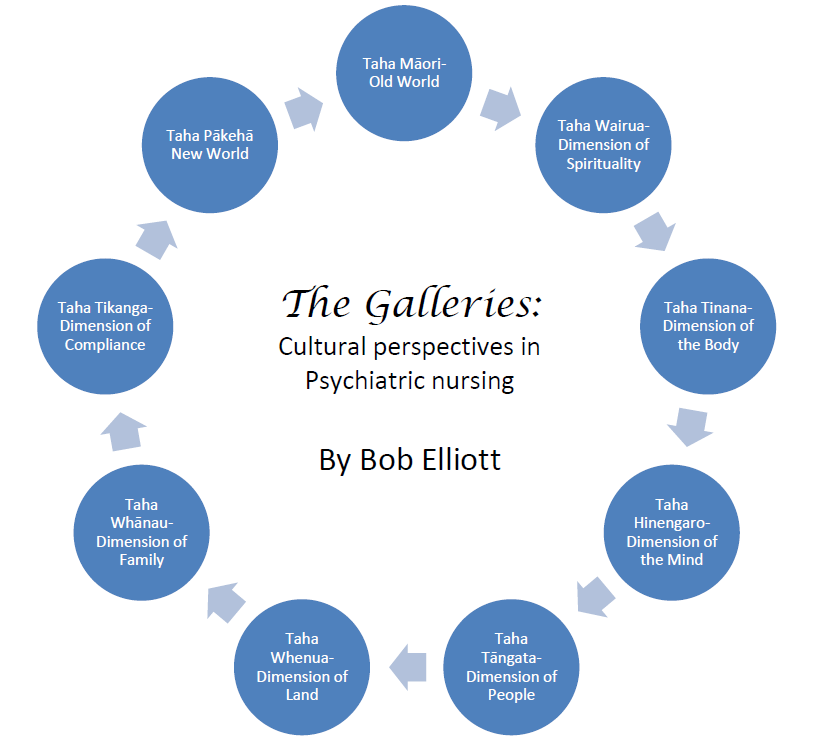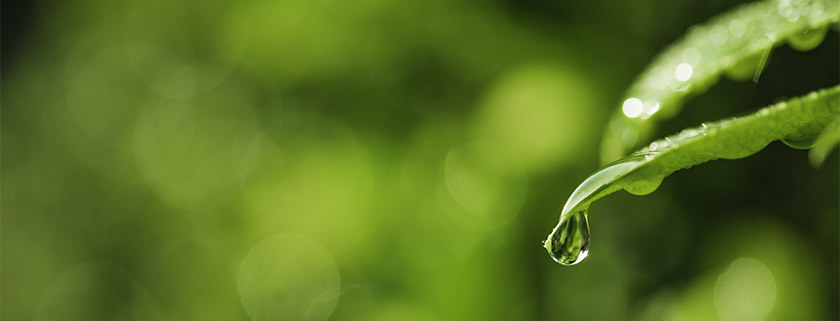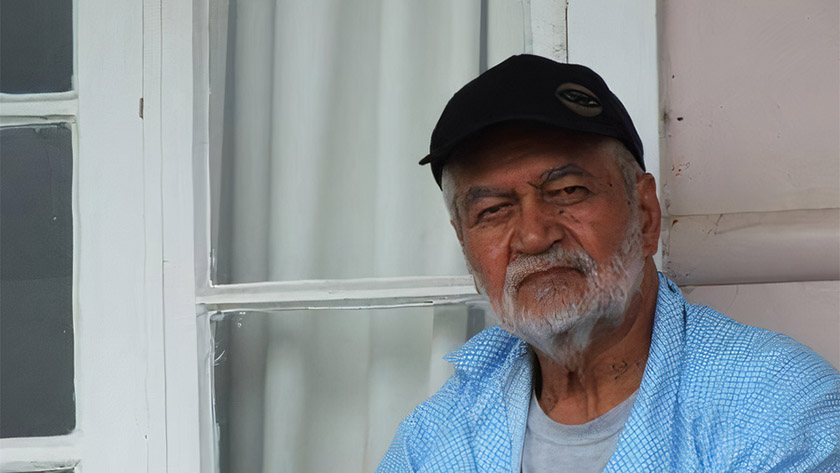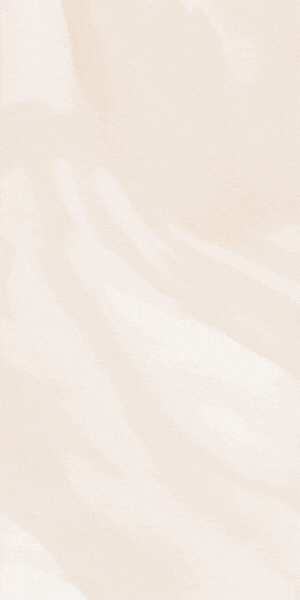This month, September, marks 35 years since Bob Elliot and his colleagues from Tokanui Hospital presented The Galleries: Cultural perspectives in Psychiatric nursing – A Māori Viewpoint,1 to the Australian Congress of Mental Health Nurses Conference in Adelaide, Australia.

Considering the psychiatric nursing environment of 1986, with the focus moving from institutionalisation to care in the community, the concepts described in their presentation would have been ground-breaking. The notion that a cultural perspective of mental health nursing could be articulated by indigenous nurses from an indigenous perspective was no doubt mind-boggling to all those listening that day, as psychiatry was then, and sadly continues to be, so dominated by western Eurocentric perspectives.
The aptly named Galleries is a selection of paintings with words. Like the learned orator who weaves his whaikōrero (speech) on the paepae (orators’ bench) at the marae, Elliott uses descriptive prose and analogies that would not be lost on non-indigenous nurses.1 Through his beautifully articulate narrative, he paints nine dimensions, each a step through the Māori world.
Taha Māori describes the dimension of the old world and acknowledges the footsteps and genealogical roots; taha wairua, the dimension of spirituality, recognises the influence of and affinity with the supreme being; taha tinana, the dimension of the body, reiterates its purpose, function and care; taha hinengaro, the dimension of the mind, notes the mortal aspect of the soul; taha tangata, the dimension of the people, states our common mortality; taha whenua, the dimension of the land, returns us to our natural links; taha whānau, the dimension of the family, realises its potential; taha tikanga, the dimension of compliance, finds the structure of purpose; and taha Pākehātanga, the dimension of the new world, sees the dark side of optimism.1
Elliott states that some or all of these dimensions touch the lives of Māori, and proposes that to lose these dimensions is to lose sanity, because they reflect “our origins, our present location, hopes and un-slept dreams”. They also reinforce that mental health is “total health” – something nurses need to consciously aim to achieve for their patients.1
The Galleries is as relevant today as it was in 1986. It is there to remind nurses that indigenous perspectives exist and are important, particularly when understanding issues related to Māori health inequities. The nursing care we provide does not have to be dominated by one view of the world – other views must be considered.
Bob Elliott (Ngāti Maniapoto, Ngāti Tamaterā) qualified as a registered psychiatric nurse in 1968, later going on to train as a general registered nurse. He had a prestigious career in nursing, and was involved in the development of the first kaupapa Māori inpatient unit, Whaiora, at Tokanui hospital. This led to similar units being established across the country. Elliott passed away in 2016, aged 78.
Through presenting and later publishing The Galleries, he provides the philosophical context for understanding how many tangata whenua (indigenous people of Aotearoa) see the world. It provides a unique insight for New Zealand nurses that can only help to enhance their practice when working with Māori and also a point of difference from nursing in other places in the world. For these reasons alone, Elliott should be recognised as Aotearoa New Zealand’s first nurse theorist.
In celebration of the 35th anniversary of the conference presentation, nurses should take some time to read The Galleries. An excerpt, the Gallery of Taha Wairua, follows, to get you started.

Welcome to the Gallery of Taha Wairua
or the dimension of spirituality
In this gallery – Taha Wairua, is the greatest gift,
Given by Io (the Supreme Being)
To mankind.
Taha Wairua is:
The timeless twinkle . . . of celestial lace in a crystal-crisp night sky;
The warm, open smile . . . of an innocent child;
The calm, caring touch . . . of a faithful friend;
The denial of pleasures . . . to give to another
And the protection . . . of basic principles
For the families . . . of nature and humankind.
Taha Wairua is also:
The gleeful joy . . . of the roaring surf;
A half-halo rainbow . . . on a clouded rain-swept sky;
The pristine gold . . . of an un-trodden beach;
The hypnotic quality . . . of natural masterpieces;
The spiraling beauty . . . of bird and people song
And the fractured reflections . . . of a mosaic raindrop.
It is the unforgettable cry of BIRTH; The magical moment of natural DEATH
And the sobering hallowed anguish from CRUCIFIED HUMANITY.
Taha Wairua allows each person, in time,
To see their true inner selves
And to amend any deficits in a more enlightened way.
EVERYONE – has some Taha Wairua,
But rarely is it used all day and every day.
Some people deny its existence
And endure a life-time of spiritual emptiness.
Others, mis-use it and are denied
further riches to their lives.
Taha Wairua is the GOD-FORCE
That transcends all man-made boundaries.
Taha Wairua can be found ‘behind a grotesque facade’
In a ‘wretchedly deformed container’
Or tragically mirrored ‘across a brutally-shattered window’.
Taha Wairua is the most difficult gift to receive
But the easiest to use.
It is the only gift that is indescribably beautiful
With a magnificent purity that beautifies the environment.
It also shows as a quiet incandescence in the eyes of those so ‘afflicted’.
Taha Wairua makes:
The intolerable . . . . TOLERABLE; The biased .. . . . . . . . OBJECTIVE;
Despair . . . . . . . . . . . . .HOPEFUL; And people-kind . . . GOD-LIKE.
It is the SEED . . . for world peace,
The POWER . . . for brotherly and sisterly LOVE
And the crucial element . . . for the MATURITY of Earth-kind.
These are some of the divine and forgotten treasures in this gallery.
Pipi Barton (Ngāti Hikairo ki Kawhia), RN, MPhil(nursing), is a nurse lecturer at North-Tec and PhD student at Auckland University of Technology.
Reference
- Elliott, B. (1987). Cultural perspectives in Psychiatric Nursing: A Māori viewpoint (PDF, 236 KB). Nursing Praxis in New Zealand, 2(3), 3-11.





